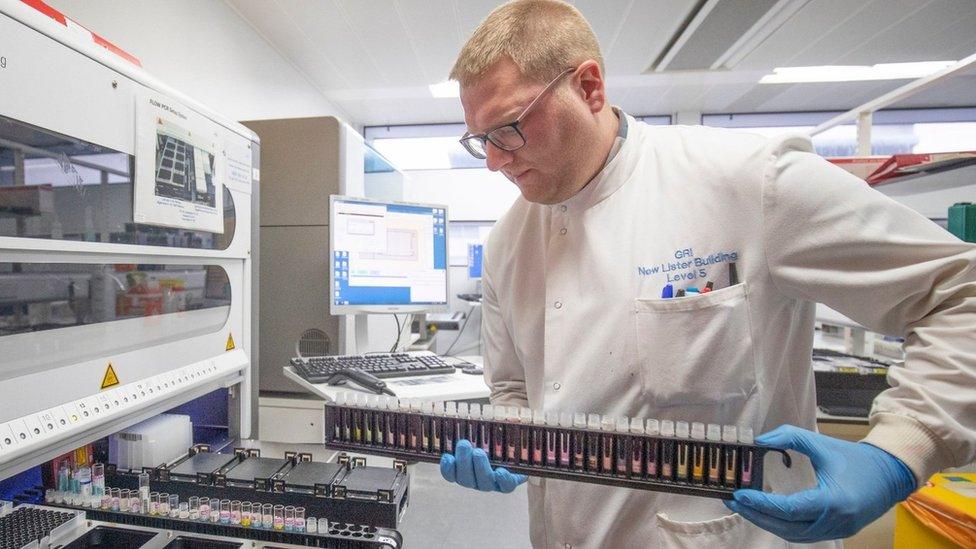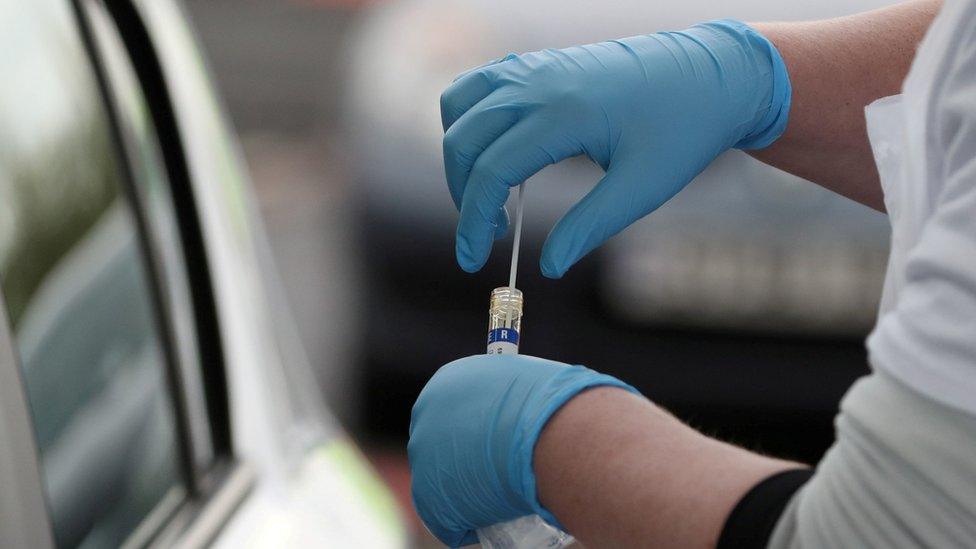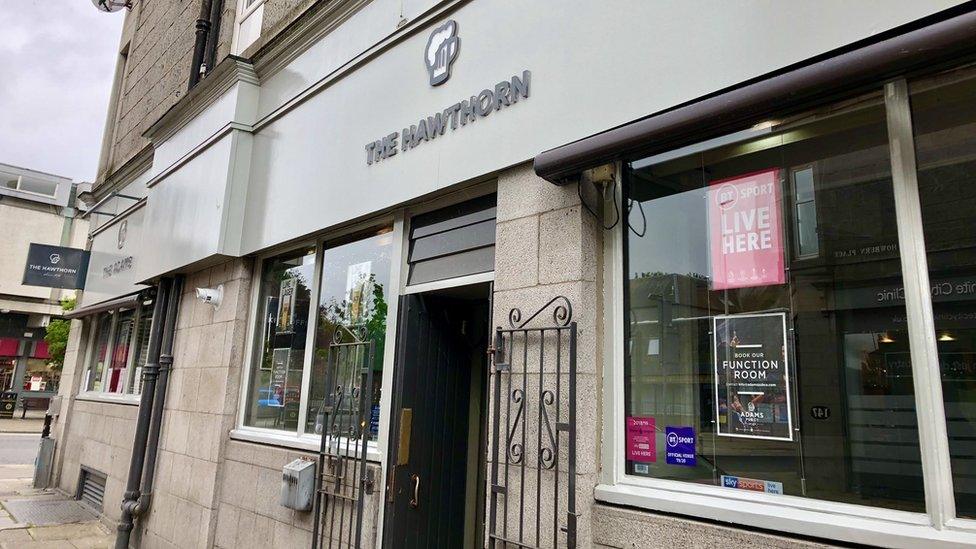Test and Protect: How is Scotland tackling local coronavirus clusters?
- Published

Scotland's Test and Protect system is a key part of the efforts to control coronavirus clusters. As First Minister Nicola Sturgeon announced that lockdown measures are to be re-introduced in Aberdeen to deal with an outbreak in the city, we look at how the system has been working.
Scotland has favoured a "boots on the ground" approach when it comes to Test and Protect, external.
As soon as a cluster is detected, local NHS health protection teams take charge of the incident. The belief is that local knowledge is the best way to break a cluster down.
It is about that basic principle of person, place and time, and local teams do the detective work. Where has the initial positive case been? Who have they been in contact with?
They need to build up a picture of risk from where transmission started.
Teams will look at things like the ventilation in a building, the toilets, the communal areas. They can decide whether a whole workplace should be tested.
Speed is critical
The demographic is also important. Young people, for example, are more mobile and that may mean more contacts need to be traced.
Then contact tracers get on the phone, visit premises and continue to assess the risk of spread and whether additional testing is required.
Speed is of course critical. That means getting test results within 24 hours, and about 80% of contacts being traced within a further 24 hours - but the quicker the better.
So far, I'm told people have been largely compliant when asked to isolate because they have been in contact with a positive case.

Scotland's National Test and Protect Centre is the start of the system.
It's a virtual call centre where about 100 trained contact tracers triage calls and manage the most straightforward positive cases.
They regularly liaise with NHS 24 on the look out for early warnings signs.
They will also do some checking on people arriving back from destinations where quarantine rules are in place to make sure returning travellers are not displaying symptoms.
Breaking the chain
But the National Test and Protect Centre can be scaled up quickly.
There are 800 bank staff who can be called on if a public health team in part of Scotland needs back-up to trace contacts and make those all-important calls.
If there are multiple outbreaks or connections between outbreaks, Public Health Scotland will direct efforts to break those chains of transmission. Again, more staff with public health expertise can be called on if required.
There is no magic number of cases that will see a reintroduction of measures. That will depend on whether the public health teams believe they can still break the chains of transmission.

The Aberdeen outbreak has been linked to 20 bars in the city, including this one
In Aberdeen, some businesses had already voluntarily decided to close for a period.
But with the number of cases in the "significant" outbreak rising to 54 by Wednesday - and with evidence that it has started to spread in the community - lockdown restrictions have been reimposed.
Pubs and restaurants will be closed as part of the measures, with people told not to travel to the city and locals urged not to go into each others' homes or travel more than five miles for leisure purposes.
However, levels of the virus in Scotland continue to be low and while we might be seeing a spike in Aberdeen, public health teams are confident the flexible system they have in place is robust.
The Aberdeen cluster is the fourth we have had in Scotland, after Dumfries and Galloway, Lanarkshire and Inverclyde (although a link was established between Lanarkshire and Inverclyde).
Every time that lockdown restrictions are eased, more outbreaks are expected.
Restarting the hospitality sector with the opening of pubs and restaurants has been the biggest test so far, with the next big test expected when pupils return to school next week.
- Published2 August 2020
